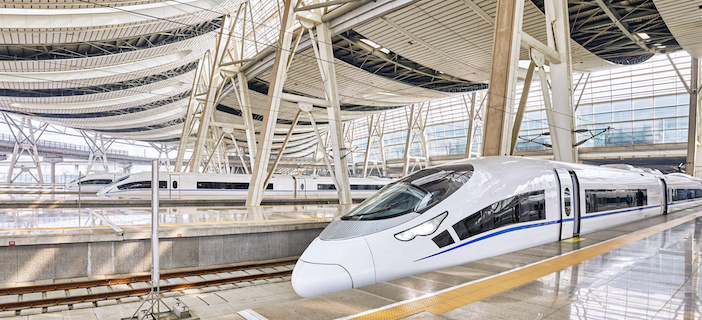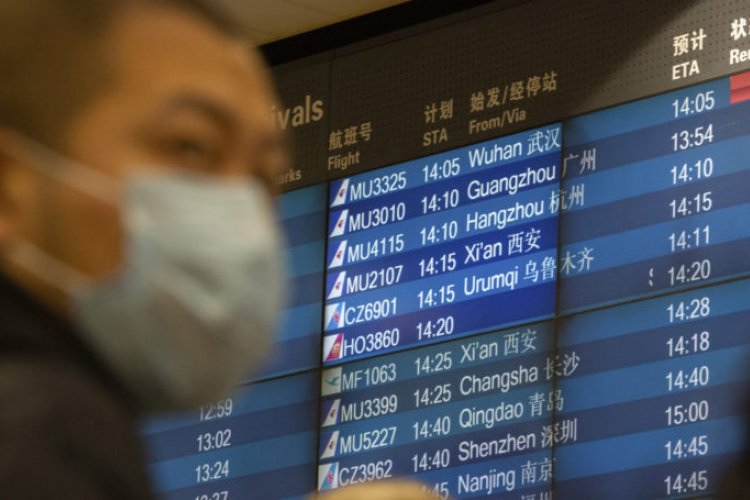We have often bought tickets at offices around Beijing using photocopies of passports, not the passport itself (when buying in advance for friends and family who haven't yet arrived in China for example), so you don't need the actual passport when purchasing - unless something has changed?... You DO need the actual passport to pick up the ticket if you buy through WeChat/the train ticket website though.
Nearly Everything You Need to Know About High-Speed Train Travel in China
Seeing as how international travel is ostensibly off the table for expats this summer, it's the perfect time to ride the rails around this massive land we call China.
In normal times, air travel's convenience and speed make it easy to overlook the state-of-the-art high-speed train network that can send us to China's major destinations at a fraction of the price. Currently, China has the most extensive and fastest-growing high-speed railway in the world, with 15,500 miles of track covering most of the major cities in the country. Leaps and bounds in the high-speed track specifically have seen travel times between north and south drop dramatically. That means a trip that used to take an entire day on a slow train can now be achieved in an overnight ride in a comfortable sleeper.
Train travel in China is also enticing because business and first-class prices aren’t inflated, allowing thousands of passengers access to a once out-of-reach luxury. Given the additional legroom and the serenity of the cabin environment, the extra cost can be worth it, especially if it's the only option left.
Below we've compiled a number of tips and tricks that will hopefully help enhance your train experience in China, as well as some of the country's most desirable destinations that don't require an overnight ride to reach.

Train Travel: The Essentials
Currently, there are four train stations in Beijing – Beijing Station, Beijing South, Beijing West, Beijing North – all of which offer high-speed trains out of the city. You can purchase tickets at these stations, via WeChat (Me --> WeChat Pay --> Rail & Flights), or through Ctrip, 12306, and other online platforms. Previously, foreigners were required to pick up their tickets at the corresponding station prior to departure, though over the last few weeks, a number of the Beijinger's staff have been told to pick up tickets while others were told they didn't have to. To err on the safe side, however, we would recommend approaching the ticket booth to be sure.
Another option is to purchase and pick up tickets from a domestic travel agency office around the city with a slight fee. This is likely the most straightforward way, and upon arrival at the station, you can go directly to your platform after a painless security check that allows you to bypass ticket booth lines, which can grow exponentially during Chinese holidays.
Finally, make sure you always have a physical copy of your passport when purchasing tickets and when boarding the train. A passport pick-up receipt domestically on trains can work as well if you are in the process of renewing your visa.
Train Travel with Children
If you prepare well in advance, a train trip with kids can be fun and maybe even relaxing since you are able to bypass at least a couple of the issues that plague air travel (flight delays, stringent security, cramped seating). Diaper-changing tables are also available on high-speed trains, which can be a very tricky thing to maneuver mid-flight.
According to China rail’s policy, children under 12 years of age cannot travel on a train alone and should be accompanied by an adult. Also, children up to 1.2m (3.9 feet) in height can travel for free but must, officially, sit on their parent’s lap for the entire length of the trip. A child ticket is needed if a seat is required, and depending on the length of your trip you might want to go ahead and purchase an extra seat anyway so that you can both sit comfortably.
One adult can bring only one child (under 1.2m) for free. If there is only one adult and more than one child, the other children need to have children’s tickets. All children 12 years of age and under, up to 1.5m (4.9 feet) in height are eligible for children’s tickets. A child’s ticket price is half that of an adult ticket, except for sleepers, which are 75 percent of the adult ticket price. Children more than 12 years old or more than 1.5m (4.9 feet) tall need to buy adult tickets at the full fare.
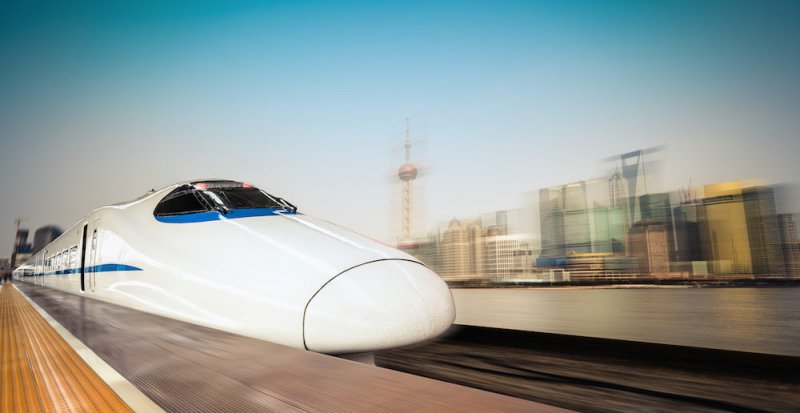
High-Speed Train Types
G Category Trains: The fastest and most state-of-the-art, with top speeds of 350km/h, running primarily during the day.
D Category Trains: These are the second-fastest trains, used for some long-distance overnight routes, with soft sleepers available.
C Category Trains: High-speed trains running between two neighboring cities, for example, Beijing to Tianjin.
Seat Classes on High-Speed Trains
High-speed trains have four seat classes: second class, first-class, superior class, and business class. While second class is the most basic, business class and superior class may provide you with extra comfort during long trips.
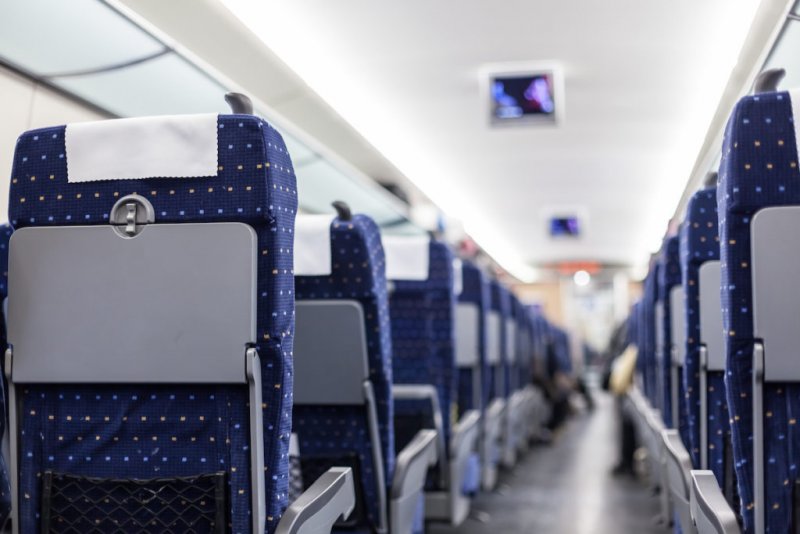
Second Class
Second class seats are the most affordable seats on high-speed trains. They have five seats in a row (3+2). There isn't much space between rows, but the amount is still significantly more than you’ll find on airplanes. Also, there are usually power outlets available in every row so that you can keep all of your devices fully charged.
First Class
With four seats in a row, first class seats are slightly more spacious and comfortable than second class. While these aren’t the most deluxe seats on the high-speed train, they do provide an extra amount of comfort and serenity if you tend to be a little claustrophobic in small spaces loaded with people eating instant noodles or watching soap operas at an inappropriate volume.

Superior Class
Here, three seats are arranged in a row. Passengers may find the superior coach quieter, with more privacy, as a glass door separates the coach from the other cars. These are great for solo passengers with a little extra money to burn as you can have an entire row to yourself if you play your cards right.
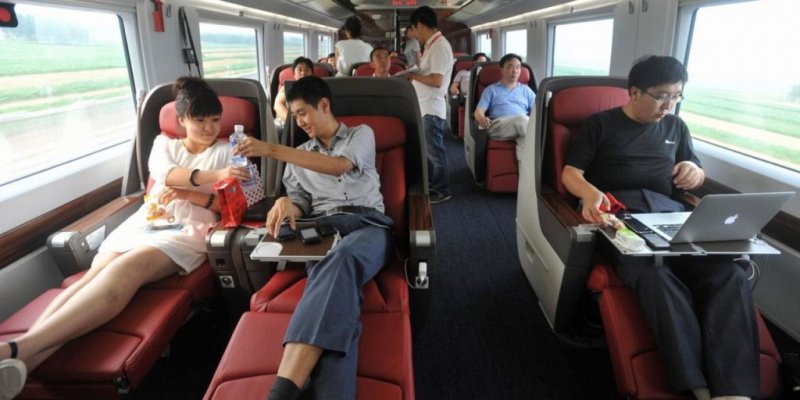
Business Class
Business class seats are the most luxurious and are only available on G-category trains. Seats are spacious with two meters (6.6 feet) of space between the rows. There are three seats in a row (2+1), and all seats can recline to a horizontal position allowing for a proper nap.

Soft Sleeper Class
China’s soft sleeper cars on D-category trains have been put into service on overnight high-speed trains between Beijing and Shanghai, and are slowly being rolled out on other routes. Unlike the old-style soft sleeper cars, the newer sleeper beds are parallel to the hallway. There are two rows of double-decker sleeper beds on each side of the hallway, and luggage can be placed under the beds for easy access.
Deluxe Soft Sleepers
Deluxe soft sleepers are only available on a few high-speed trains, such as Chengdu to Shanghai, Chongqing to Beijing, and they are costly. We can dream though. And dream even better in one of these deluxe cabins.
Dining
Unfortunately, an area where these trains don’t meet our expectations is in the dining category. Food is exceptionally underwhelming and flavorless, even compared to air travel standards. That’s why it’s best for you to purchase all of the food you may need (sandwiches, salads, snacks, and so on) before you get on the train. Take on this responsibility of procuring food beforehand, and you won’t be let down by an assortment of sad instant noodles.
Popular High-Speed Train Destinations Direct From Beijing
Here’s a short list of some of the fun places you can visit using the high-speed train. Prices are subject to change, but this should give you a basic idea of what you can expect to pay.

Beijing to Shanghai
Departing from: Beijing South Railway Station
Distance: 1,318 km (819 miles)
Travel time: 4-5 hours
Second class: RMB 533
First class: RMB 933
Business class: RMB 1,748
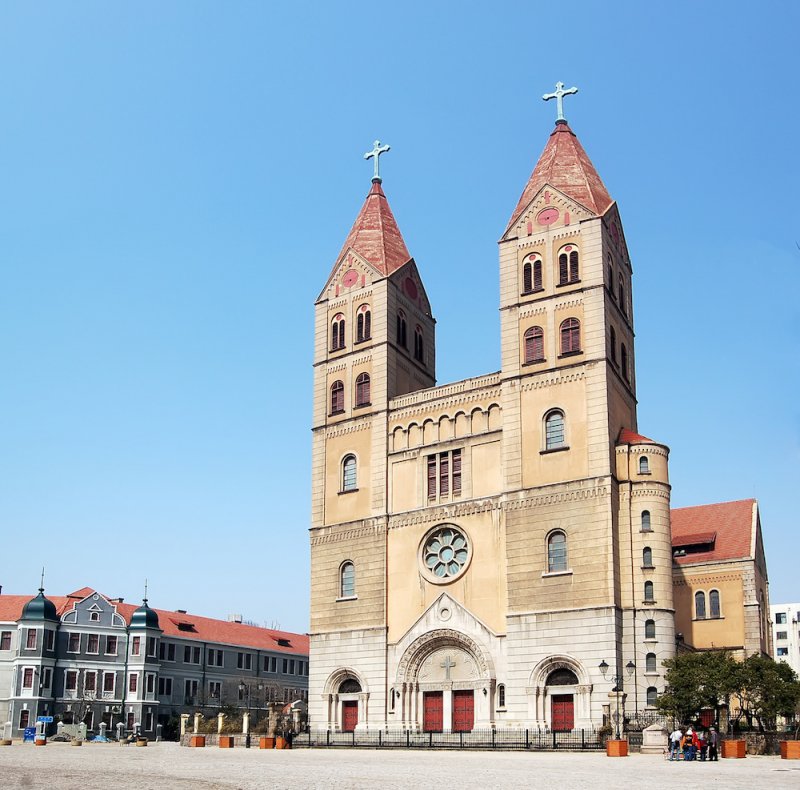
Beijing to Qingdao
Departing from: Beijing South Railway Station
Distance: 819 km
Travel time: 4-5 hours
Second class: RMB 312
First class: RMB 516
Business class: RMB 967.5

Beijing to Xi’an
Departing from: Beijing West Railway Station
Distance: 1,216 km
Travel time: 4-5 hours
Second class: RMB 515.5
First class: RMB 824.5
Business class: RMB 1,627.5
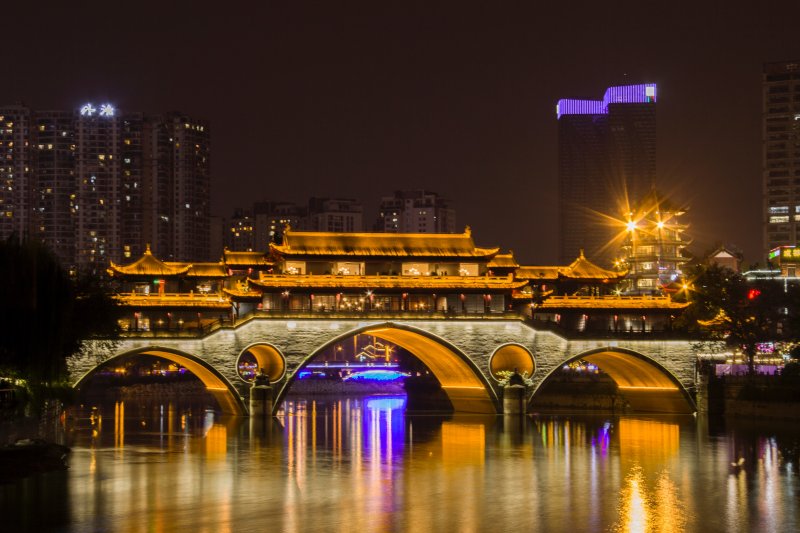
Beijing to Chengdu
Departing from: Beijing West Railway Station
Distance: 1,800km
Travel time: 8-10 hours
Second class: RMB 778.5
First class: RMB 1,246
Business class: RMB 2,417

Beijing to Guangzhou
Departing from: Beijing West Railway Station
Distance: 2,324 km
Travel time: 8-9 hours
Second class: RMB 862
First class: RMB 1,380
Business class: RMB 2,724

Beijing to Kunming
Departing from: Beijing West Railway Station
Distance: 2,735km
Travel time: 11-12 hours
Second class: RMB 1,147
First class: RMB 1,877.5
Business class: RMB 3,623
A variation of this article first appeared on our sister site beijingkids.
Need a break from the big smoke? Get Out, with our handy travel guides, right here.
Photos: BBC, iFeng, Adobe Creative Cloud, Zain Lee (via Unsplash)

